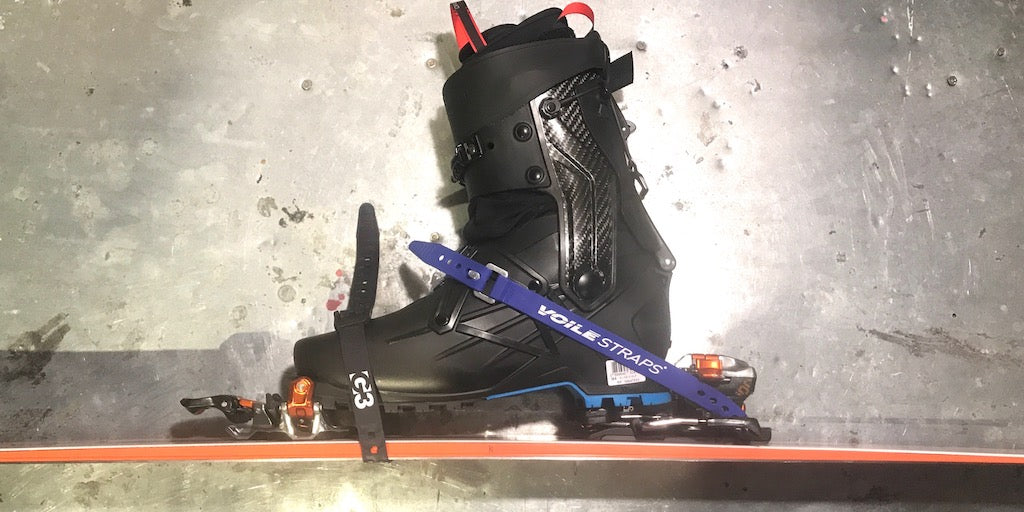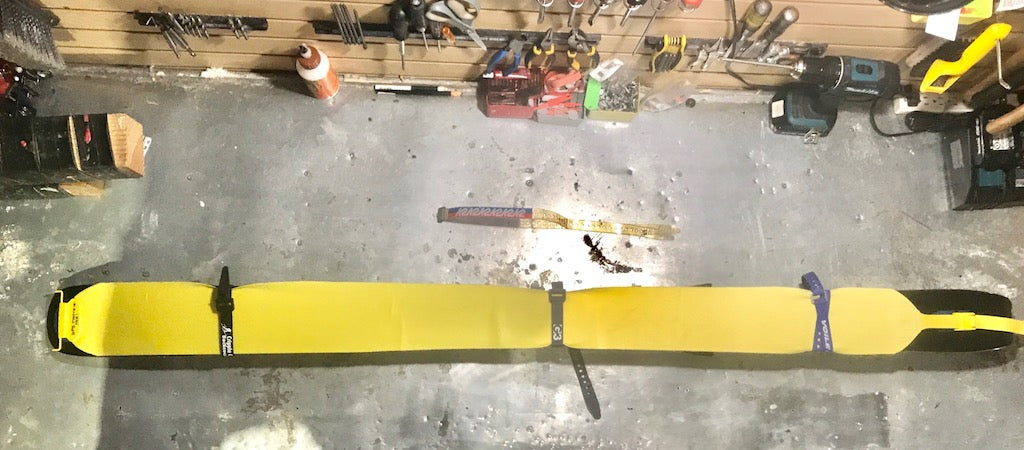

The Voile Ski Strap: Tool of Many Uses
Backcountry skiing aficionados are typically really into their gear. They know what they need to have with them for a successful ski mountaineering mission or backcountry ski day. I have taken part in many a detailed discussion as to what “needs” to be in your backcountry backpack for any of those “what if” moments, with each person trying to outdo the other like contestants on a network game show...
On Tonight's Episode of Backcountry Jeopardy:
Engineering Feats for $1,000 Alex...
...It can be used to connect your broken ski poles, mend a broken binding, keep you attached to a ski when your binding is completely pulled out, stabilize a major injury and attach just about anything to just about anything else...
...What is 'A Ski Strap' Alex? - *ding, ding, ding, ding* - You are correct!
When I am asked what I carry with me in my backcountry spare parts/fix-it kit, the first thing that comes to mind is the tried and true “ski strap”. Not just for strapping skis together, the ski strap is the most versatile item in my backcountry skiing pack. I usually carry no less than 4 decent sized ones (15” or longer) with me at all times. Incredibly strong and weighing just ounces, so grab a bunch of them. I know from personal experience that you get a very disturbing feeling deep in your belly when one of your alpine touring “tech” heels blows apart high up on a mountain and miles from the car and cold beer. Many will reach for their In-Reach communication device (no don’t do that quite yet!), or baling wire or duct tape which may work for a quick fix, but most likely will not do the trick.


The photo above shows a backcountry fix for a torn out toe piece. Place one ski strap around the lower shell of the boot and secure to the ski. Place a second ski strap (this one should be a longer ski strap) from the instep to the back fo the heel turret. This will secure your ski while you limp back to civilization.
Pull out your lightweight do-it-all ski straps for a quick fix in the field. The combinations are plentiful: one or two will usually hold any heel unit together for the ski home and high fives at the car. Three to four straps will typically hold you onto a ski if your binding toe piece pulls out of the ski (doh!). One long one or two connected together around the back of the binding heel unit and around the front of your boot. One or two more strapped directly around to the top of your boot and the ski. Pull tight!
In this year's Power of Four Ski Mountaineering Race, we strapped together a really bummed out racer deep in the Snowmass backcountry and he skied all the way to our shop at the Highlands ski area for replacement gear and was able to finish the race! Using your ski pole and two to three straps you can make an improvised leg or arm splint, or last resort tourniquet. Use them to attach skis and anything else for that matter to your pack. Speaking of packs, I have seen them in use for both a broken shoulder and hip belt straps. Skin failure or broken tip/tail clips, no worry, just strap your skins where necessary securely to your ski.


The photo above is a great example of how to fix a failed climbing skin in the backcountry. This can happen when the skin becomes so saturated from wet snow that the adhesive glue fails to stick to the base of your ski. Use as many ski straps as necessary and head on home with extra skinning traction!
I think you are starting to get the picture here. Leave the heavy, cumbersome baling wire at home and bring just enough duct tape for your blisters, cuts and torn clothing. For everything else... Ski Straps for the Daily Double and the win!
- Dirk Bockelman is the General Manager for Aspen/San Juan Expeditions. But don't be surprised to find Dirk off on far-flung adventures such as summiting Ama Dablam or traversing portions of the Canadian Rockies [on skis of course!]



